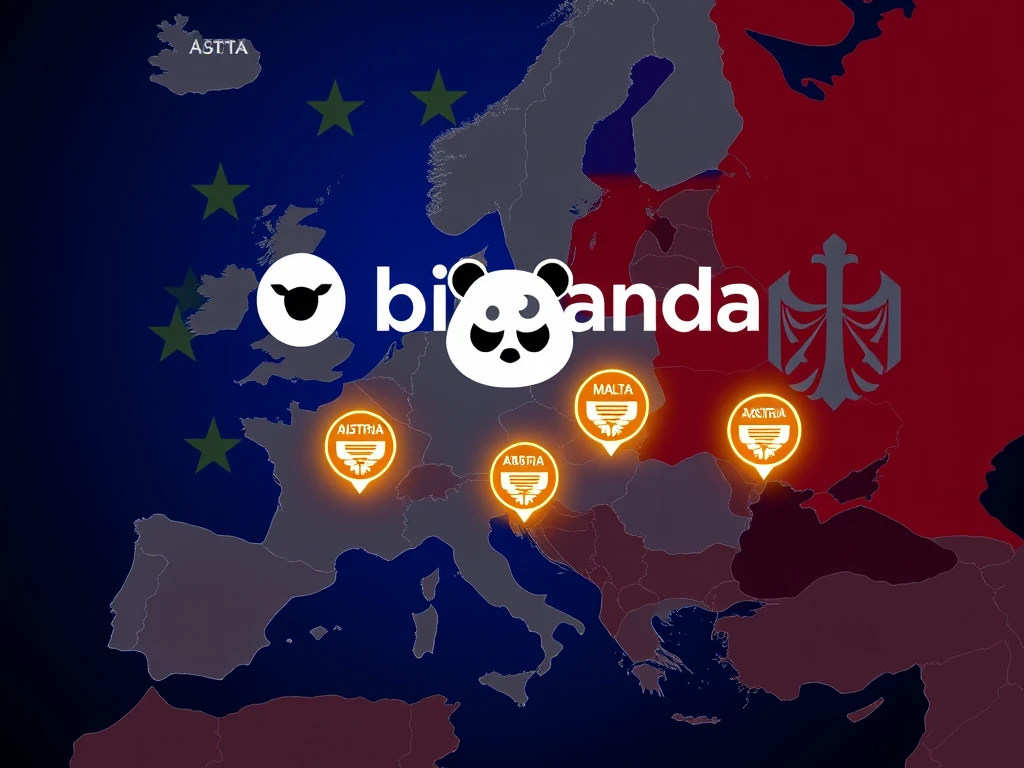Dominant Bitpanda Secures 3rd MiCA License: A Bold Move in EU Crypto Regulation

In a landmark move that underscores its commitment to regulatory excellence, Bitpanda, the Austrian fintech unicorn, has just announced a significant achievement. The platform has secured its third MiCA license, this time from its home jurisdiction of Austria. This pivotal development not only cements Bitpanda’s position as a frontrunner in the European crypto space but also sparks crucial conversations about the evolving landscape of EU crypto regulation.
Bitpanda’s Milestone: Securing a Third MiCA License
On April 10th, Bitpanda officially declared the acquisition of its latest MiCA license, granted by Austria’s Financial Market Authority (FMA). This Austrian approval follows previous licenses obtained from regulators in Germany and Malta, marking a hat-trick of regulatory compliance under the EU’s Markets in Crypto-Assets Regulation (MiCA) framework. Bitpanda proudly announced on X (formerly Twitter) that this achievement is “another step toward building the most regulated crypto platform in Europe.”
This news arrives as MiCA, fully effective since December 30, 2024, aims to harmonize crypto asset service provider (CASP) regulations across the European Union. However, Bitpanda’s proactive pursuit of multiple licenses raises an intriguing question: Is the interpretation and enforcement of MiCA truly uniform across all EU member states? Let’s delve deeper into Bitpanda’s regulatory compliance journey and what it signifies for the future of crypto in Europe.
Decoding Bitpanda’s MiCA Collection: A Strategic Move?
Vienna-based Bitpanda was quick off the mark, becoming one of the first CASPs to secure a MiCA license after the framework’s full implementation at the end of 2024. Germany’s BaFin was the pioneering regulator, issuing the inaugural MiCA license to Bitpanda in January. Shortly after, Malta’s MFSA followed suit, granting Bitpanda its second license.
In a LinkedIn post celebrating the second license, Bitpanda stated, “Following yesterday’s announcement of our first MiCAR license, this second license sends a clear message: Bitpanda is setting the standard as Europe’s most secure and well-regulated crypto platform.”
Is Multi-Licensing Under MiCA Truly Necessary?
The core objective of MiCA, proposed back in 2020, is to establish a unified regulatory environment for CASPs throughout the EU. According to the European Securities and Markets Authority (ESMA), a key player in MiCA regulation, the framework aims to create “uniform EU market rules for crypto-assets.”
Given MiCA’s harmonization goals, Bitpanda’s strategic acquisition of multiple licenses across Austria, Germany, and Malta prompts consideration. Does this indicate inconsistencies in how EU crypto regulation is being applied across different member states? Or is Bitpanda proactively ensuring the highest level of regulatory compliance across various jurisdictions for strategic advantage?
While official public registries of MiCA license holders are not yet consistently maintained by regulators like Austria’s FMA, Germany’s BaFin, or Malta’s MFSA, Austria‘s FMA records show Bitpanda holding several approvals across its entities, including Bitpanda Asset Management GmbH and others.
Key Questions Surrounding MiCA and Multiple Licenses:
- Harmonization vs. Interpretation: Does Bitpanda’s multi-licensing strategy highlight varying interpretations of MiCA across EU member states, despite its intended harmonization?
- Strategic Advantage: Is securing multiple licenses a strategic move by Bitpanda to demonstrate superior regulatory compliance and build trust in a competitive market?
- Future of EU Regulation: What implications does this have for the future enforcement and clarity of EU crypto regulation under MiCA?
As the crypto landscape in Europe continues to evolve under MiCA, Bitpanda’s proactive approach to regulatory compliance sets a noteworthy precedent. Whether driven by necessity or strategic foresight, their pursuit of multiple licenses underscores the complexities and nuances of navigating the new era of EU crypto regulation. The industry watches closely to see if this multi-license trend becomes the norm or if true harmonization will eventually streamline the regulatory path for CASPs across the European Union.







